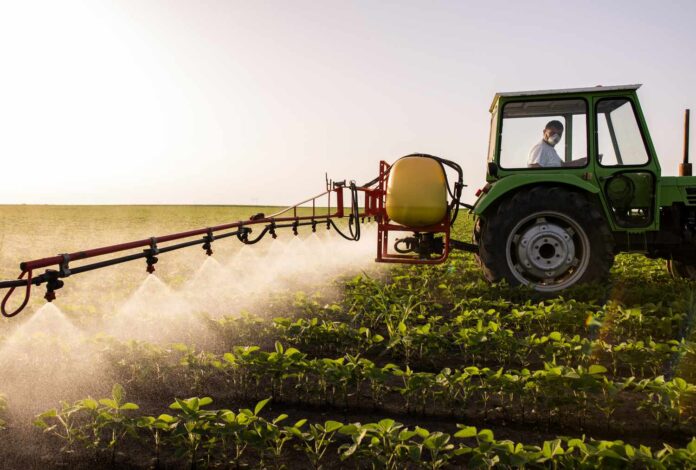:max_bytes(150000):strip_icc():format(jpeg)/Pesticides-Used-on-Corn-Soybeans-Citrus-and-a-Host-of-Other-Crops-Could-Have-a-Link-to-Prostate-Cancer-FT-BLOG1124-0a352790d1f14e2387106b14ac590a98.jpg)
In November, Wiley and the journal Cancer published a new, peer-reviewed study by researchers at Stanford University, identifying 22 pesticides “consistently associated with the incidence of prostate cancer in the United States.”
To come to this conclusion, the researchers assessed associations between 295 pesticides and prostate cancer incidences across counties in the United States. The team explained that it used “a lag period between exposure and cancer incidence of 10 to 18 years because most prostate cancers grow slowly.” Thus, the years 1997–2001 were assessed for pesticide use and 2011–2015 for prostate cancer outcomes. “Similarly, 2002–2006 were assessed for pesticide use and 2016–2020 for outcomes,” they added.
Of the 295 pesticides initially assessed, they identified 22 with consistent links to prostate cancer, including widely used herbicides like 2,4-D and a mix of fungicides, insecticides, and a soil fumigant (pesticides).
As the Environmental Protection Agency (EPA) explained, the herbicide 2,4-D has been used since the 1940s in many places “including turf, lawns, rights-of-way, aquatic sites, forestry sites, and a variety of field, fruit, and vegetable crops. It may also be used to regulate the growth of citrus plants.” The National Pesticide Information Center also noted that this particular pesticide is also often used on “field corn, soybeans, spring wheat, hazelnuts, sugarcane, and barley.” The EPA added that it has concluded that “2,4-D products can be safely used by following label directions.”
However, in 2016, the Natural Resources Defense Council (NRDC) noted that there is room for concern with 2,4-D. It pointed to observational research that also showed an “apparent” link between exposure to 2,4-D and non-Hodgkin’s lymphoma and sarcoma but added that “both of these can be caused by a number of chemicals, including dioxin, which was frequently mixed into formulations of 2,4-D until the mid-1990s.”
“The evidence isn’t clear enough to draw conclusions with confidence, but it is better to take precautions to prevent possible cancers than to wait for more evidence,” Jennifer Sass, an NRDC senior scientist, added at the time. The NRDC did note that in 2015, the International Agency for Research on Cancer also declared 2,4-D a “possible human carcinogen.”
The new study published in November also identified three herbicides — trifluralin, cloransulam-methyl, diflufenzopyr — and one insecticide — thiamethoxam — as a link to an increased prostate cancer mortality rate. These chemicals are also primarily herbicides that play significant roles in controlling weeds and pests in U.S. agriculture, including on tree fruit, nut, vegetable, and grain crops, including cotton and alfalfa, according to the Handbook of Pesticide Toxicology. Of these, only trifluralin is classified as a “possible human carcinogen” by the EPA.
The analysis suggests that environmental factors, including pesticide exposure, likely play a substantial role in the higher incidences of prostate cancer in rural, farming-intensive areas. By tracking pesticide use over multiple decades, researchers could uncover patterns showing that sustained exposure has long-term health consequences, particularly for individuals living in high-spray zones. These findings align with existing concerns about agricultural workers’ health risks and emphasize the importance of protective policies for communities surrounding large farming operations.
“This research demonstrates the importance of studying environmental exposures, such as pesticide use, to potentially explain some of the geographic variations we observe in prostate cancer incidence and deaths across the United States,” Simon John Christoph Soerensen, MD, of Stanford University School of Medicine, and lead author of the study, shared in a statement. “By building on these findings, we can advance our efforts to pinpoint risk factors for prostate cancer and work toward reducing the number of men affected by this disease.”
However, some researchers were quick to note that the work is observational in nature and should be taken with a grain of salt.
Oliver Jones, a professor of chemistry at RMIT University in Melbourne, Australia, commented on the findings on Scimex.org, noting, “The authors don’t actually say that pesticides cause prostate cancer, just that they found 22 pesticides that were statistically associated with prostate cancer and that more research is needed. An association between two things does not mean one caused the other; it is just an observation.” Jones added, “The other thing to remember is the adage that the dose makes the poison. Everything is a poison if you have enough of it, including water. If we are saying something is toxic, we also need to talk about the amount and duration of exposure needed to have this effect. Plenty of people use herbicides and don’t get prostate cancer.”
This isn’t the first time pesticides have been called out in 2024. In April, Consumer Reports released its investigation on pesticides in fruits and vegetables stocked in American grocery stores. And it said it found “alarming” levels that “raised flags” — including finding a pesticide on green beans that’s been banned in the U.S. for more than a decade.
“The way the EPA assesses pesticide risk doesn’t reflect cutting-edge science and can’t account for all the ways the chemicals might affect people’s health, especially given that people are often exposed to multiple pesticides at a time,” Dr. Michael Hansen, a senior staff scientist at Consumer Reports, told Food & Wine at the time. “So we take a precautionary approach to make sure we don’t underestimate risks.” That’s why, the organization made a bigger ask, “saying that what needs to be done is the whole class of organophosphates and carbamate pesticides should be banned because the risk is just as high as when we started looking at this — even though there have been very bad pesticides that have come off the market.”
However, there was at least a little good news. The team noted that pesticides presented “little to worry about” in about two-thirds of the foods it looked into, including “nearly all organic ones,” and that the “biggest risks are caused by just a few pesticides, and those are “concentrated in a handful of foods, grown on a small fraction of U.S. farmland.”



